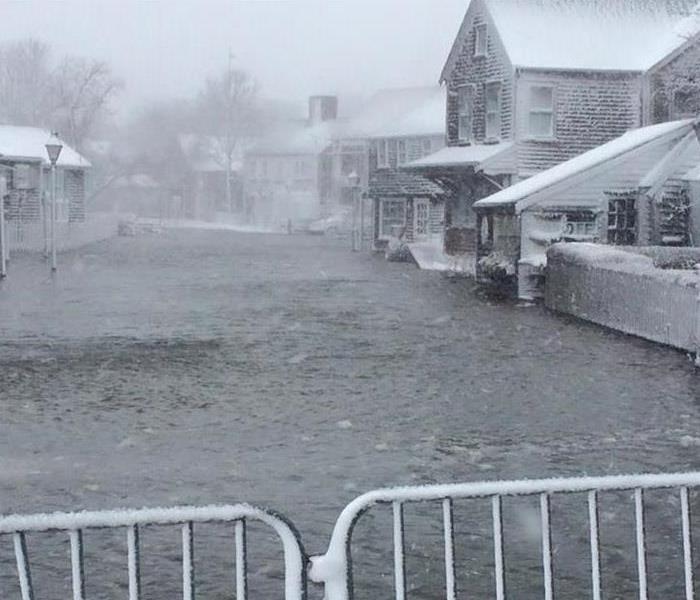12 Types of Storms
11/10/2017 (Permalink)
 SERVPRO of Upper Cape Cod and the Islands is competent storm damage restoration service that will help you restore your property
SERVPRO of Upper Cape Cod and the Islands is competent storm damage restoration service that will help you restore your property
Don't like the weather on Cape Cod? Wait a minute, it's sure to change!
Being a part of the Cape Cod community, SERVPRO of Upper Cape Cod and the Islands understands the needs and requirements of the locals when it comes to storm damage. Not only are we proactive in our approach towards disaster remediation, but we also ensure that our clients get the best restoration services available. Storms come in all sizes, shapes, and forms, and we understand that our region is prone to seasonal storms of many types. From tropical storms to hurricanes, the Cape Cod residents have braved through it all, and we have always been there to help them get their property back to "Like it never even happened."
Here, we are highlighting the most common types of storms that are prevalent in the Cape Cod, Massachusetts:
Hailstorms
With strong and heavy winds, hail storms can range from moderate to severe type. Based on the size and shape of the ice pellets and hailstones, it can cause minimum to high damage to your property. The size of the pellets can range between 0.2 to 0.5 centimeters in diameter.
Ice Storms
Similar to hail storms, ice storms are also pushed by heavy and strong winds. Instead of carrying hailstones and ice pellets, the ice storm usually brings rain. Due to freezing temperatures, the rain freezes upon falling on the ground or on impact. Ice storms can weaken wooden structures, poles, buildings as these can be responsible for ripping apart grown trees due to the accumulation of weight on the branches.
Snowstorms
When the temperature falls lower than zero, the strong winds spread snowflakes. This kind of storm is called a snow storm. If the storm is prolonged for hours or overnight, it can easily form inches of snow cover. On the weak areas of your property, this accumulation can cause stress and even breakage.
Blizzards
When a snowstorm worsens, it ends up becoming a blizzard. These will have stronger winds of around and over 35 miles per hour. Another indication of blizzards is that these will continue on for hours. The wind damage can become devastating for weaker and standalone structures. The snow that gathers in the storm will impact roofs, windows, etc.
Thunderstorms
When the skies turn dark due to heavy clouds and are accompanied by highly frequent lightning, then it is called a thunderstorm. Moderate to heavy rain may also fall during the thunderstorm, but not always. The severity of winds is relatively low. If the lightning strikes on your property, it will lead to heavy damages and may even cause a fire incident.
Rainstorms
The only difference between a thunderstorm and a rainstorm is that is the former has more concentration of lightning whereas the latter brings with it heavy rainfall. Rainstorms may cause flash flooding which can heavily damage property, especially basements. Water damage and mold remediation will be necessary afterward. The tropical storms are prone to hit the Cape Cod region every five to six years, according to meteorologists.
Windstorms
These storms are composed of very strong and heavy winds which may or may not include rain. However, due to the intensity of the winds, windstorms are accompanied with stones, dust, and even hailstones. This storm is strong enough to uproot trees and cause damage to property, especially the exteriors.
Dust Storms
These storms carry sand particles and dust. The overcast will have a yellowish tint. Such a storm makes breathing and visibility difficult. The damage may not be as heavy as other storms but it can result in accumulation of dust particles in vents and even within houses and offices.
Sandstorm
The content of sandstorms differs from dust storms in the sense that it carries majorly sand. These storms are more common in and around desert areas where the winds carry off a huge amount of sand. When faced with a sandstorm, the property may be damaged moderately to a medium level of intensity.
Cyclones
These are the most severe types of storms that rotate in anti-clockwise or clockwise direction. As these travel, they rip off whatever comes in their way. The destruction level is intense and precautions need to be taken beforehand to avoid damage.
Hurricanes
This is a severe cyclone which has its origin near the equator. It travels north and hence moves counterclockwise. A hurricane is accompanied by heavy rains and violent winds. It destroys everything in its path. Cape Cod suffers the Atlantic hurricane season almost every other year which may or may not affect the region. Meteorologists state that Cape Cod is hit by a violent hurricane every eleven to twelve years.
Tornadoes
This storm is basically a fast whirling wind which rotates clockwise and builds up due to wind pressure. The dust on the ground is forced into the swirl of the tornado. As it passes over urban areas, it rips off the property if the intensity is strong. The tornadoes that hit oceans are called water sprouts.
For any and all storm damage restoration, you can call SERVPRO of Upper Cape Cod and the Islands at (508) 888-5985.





 24/7 Emergency Service
24/7 Emergency Service